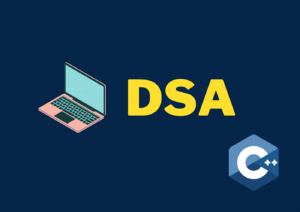
DSA to Development:A Complete Guide

1. Introduction to DSA
Computer science is based on algorithms and data structures. Writing effective, scalable, and maintainable programming requires them. Understanding DSA is essential whether you’re working on complex systems or getting ready for coding interviews.
2. Why DSA Matters in Development
DSA helps in:
-
Solving problems efficiently.
-
Optimizing code for performance.
-
Understanding the inner workings of software systems.
-
Cracking technical interviews at top companies.
By mastering DSA, developers can write code that’s not only functional but also optimized for speed and memory usage.
3. Core Concepts of DSA
Let’s explore the foundational data structures:
Arrays and Strings
-
Basics: Storing and accessing sequential data.
-
Applications: Searching, sorting, and manipulating text.
Linked Lists
-
Types: Singly, Doubly, and Circular Linked Lists.
-
Applications: Dynamic memory allocation, navigation systems.
Stacks and Queues
-
Stacks: LIFO structure (e.g., undo operations).
-
Queues: FIFO structure (e.g., task scheduling).
Trees
-
Types: Binary Trees, Binary Search Trees, AVL Trees.
-
Applications: Hierarchical data representation, databases.
Graphs
-
Representation: Adjacency List, Adjacency Matrix.
-
Applications: Social networks, shortest path algorithms.
Hashing
-
Structures: Hash Tables, Hash Maps.
-
Applications: Fast lookups, caching.
4. Algorithms to Master
Sorting and Searching
-
Algorithms: Quick Sort, Merge Sort, Binary Search.
-
Use Cases: Organizing and retrieving data efficiently.
Recursion and Backtracking
-
Concepts: Problem-solving using recursion.
-
Examples: Sudoku solver, N-Queens problem.
Dynamic Programming
-
Approach: Breaking problems into overlapping subproblems.
-
Examples: Knapsack problem, Fibonacci sequence.
Greedy Algorithms
-
Concept: Making locally optimal choices.
-
Examples: Kruskal’s MST, Huffman Coding.
Divide and Conquer
-
Principle: Divide problems into smaller, solvable parts.
-
Examples: Merge Sort, Quick Sort.
5. Best Practices for Learning DSA
-
Practice consistently on platforms like LeetCode, HackerRank, or Codeforces.
-
Understand the time and space complexity of algorithms.
-
Focus on problem-solving techniques.
6. From DSA to Development: Bridging the Gap
Real-World Use Cases
-
Use DSA knowledge to solve real-world problems, such as optimizing database queries or implementing caching systems.
Design Patterns
-
Learn patterns like Singleton, Factory, and Observer to write reusable and scalable code.
System Design Basics
-
Understand system components like load balancers, caching layers, and databases to design scalable architectures.
7. Tools and Resources for Development
-
IDEs: VS Code, IntelliJ IDEA.
-
Version Control: Git and GitHub for collaboration.
-
Practice Platforms: GeeksforGeeks, Coursera, and Udemy for tutorials.
8. Project Ideas to Apply Your Skills
-
Build a library management system.
-
Create a personal finance tracker.
-
Develop a social network graph analysis tool.
-
Implement a task scheduler using priority queues.
9. Tips to Transition from Learning to Development
-
Start with small, manageable projects.
-
Collaborate on open-source projects.
-
Focus on clean, modular code.
-
Learn to debug effectively.
10. Conclusion
Making the switch from DSA to development is a fulfilling experience that gives you the tools to take on challenging tasks. You can become a skilled software developer by grasping the ideas and using them in practical situations. Begin modestly, practice frequently, and take on challenging assignments. The path from DSA to development serves as your starting point for creating software solutions that have an impact.
you may be interested in this blog here:-
Advanced OOP Concepts in SAP ABAP A Comprehensive Guide


Leave a Reply